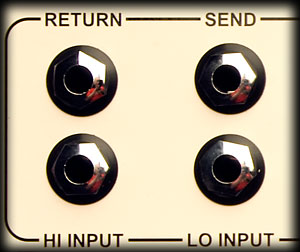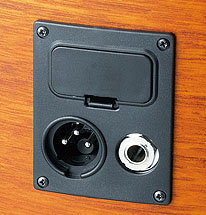Hi-Z and Low-Z Inputs and Outputs
Posted: 22 July 2012
Synopsis: HI and LOW Guitar Inputs and Outputs Explained When dealing with guitar inputs and outputs, you may come across a lot of words like impedance and resistance that aren’t necessarily related to what you’re...

|
Why are their two inputs on my amp? Many amps have two inputs (though some have more than this), with one being the "HI" input and the other being the "LOW". What should be remembered when considering the two inputs is that the choice won't change the sound or EQ of the signal, but rather the level of the signal, which also often affects volume sensitivity. |
 |
What happens is the that the HI input actually cuts the input signal, while the LOW input will leave the signal exactly as it is when it enters the amp. But the reasons for choosing one or the other vary depending on your instrument and your amp.
For example, some bass amps advise players using a bass with active pick-ups to use the HI input, while it is recommended that those using passive pickups plug into the LOW input.
As for guitars, the choice is also dependent on what type of pick-up is used. Guitarists using new, bright humbuckers might want to choose the HI input to tame the hot signal, while a player using vintage single coils may want to go with the LOW input to ensure that all of the true sound of the pick-up is replicated.
But, as is usually the case, there is no right answer, other than the option that sounds better to your ears. The amount the signal is cut in HI inputs varies widely from amp to amp (anywhere from 6 dB to 15 dB is common), and so do pick-up types. Test out which works best for your instrument – some players use one jack for one guitar and the other for a different axe (though it should be noted that for some amps, including some Fenders, both inputs become identical if both inputs are occupied).
|
Why is there a microphone output on my guitar? Guitars with an inbuilt Low-Z output skip the DI box step altogether, and can plug straight into the preamp. If you have the choice of both, you would typically only want to use the Hi-Z (quarter-inch) output if you are plugging directly into a guitar amp. Otherwise, it is best to go with the Low-Z (XLR) output. By Tom Graham |
 |










